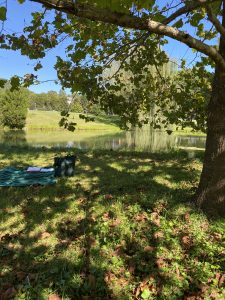
Looking more like fall in my sit spot with lovely leaves!
My sit-spot is located on the left side of the Oyster Pond, just a few feet from the water’s edge. To get to my area, I walk through the Tinker parking lot and across the street where there are a group of trees near the water. I chose to go to a tree past this group to find softer ground and a better viewing point. The area I sit in is just under a tree where I have shade, and it is right next to a young willow tree that is growing along the bank. Originally this spot was chosen to allow me to stay cool and out of the direct sunlight, however, with the changing weather, the area is now a lot cooler under the tree and I may begin to require a blanket or a heavier coat as the weather gets closer to freezing.
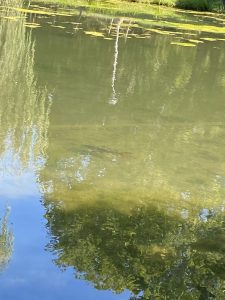
Large fish in the center of the Pond
As I took a seat in my sit spot at 2:10PM, I could feel the cold breeze as it gave me chills on my ears and made my hair sway in the wind. I could also hear the leaves and branches shaking, as they moved in an uneven creaky rhythm. As the wind picked up, I could hear leaves falling from above me, and I could see the water moving in small waves. This time around, there were few bugs flying near the ground and the insect sounds were much quieter than they had been the previous week, but the large birds above me still circled the sky. The insect sounds seemed to be more of other species, along with crickets, rather than the deafening chorus of cicadas that had been a familiar sound throughout campus before. The birds above me appeared to be a mix of crows and turkey vultures, while the smaller birds seemed to be sparrows. When the water finally became still, I was able to catch sight of the large fish I had seen a shadow of before with more clarity, as well as some various species of turtles. At one point, I caught a glimpse of a large turtle head, which I later confirmed to be an adult snapping turtle, which was a much cooler find than the common red-eared slider that I had spotted. After bundling up in my hoodie, I also noticed a blue bird land behind me, which did not seem to know I was there until after I turned around.
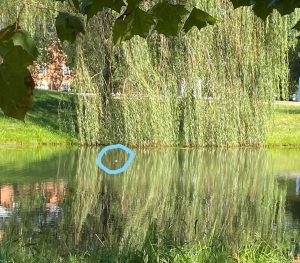
A snapping turtle decided to poke his head out!
When I decided to observe the 3 things I had picked out from before, I noticed that the branch had completely vanished, as if someone had cleaned up around the trees when mowing the grass. Due to this, I decided that I would instead observe the young willow tree, as I had caught it in the background of my picture before. The algae that I was watching has seemed to have decreased in surface area and has moved over closer to the street side of the pond, which allowed for clearer view of the center of the pond where the fish seemed to linger. The tree I was sitting under seems to have lost many of its leaves, as there are loads of brown leaves below the branches and many of the leaves still attached are starting to change color.
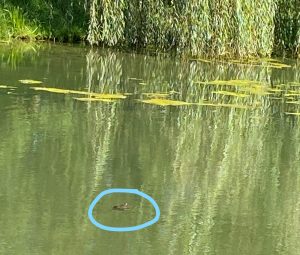
A young turtle swims by at a distance
Although I explored my sit spot previously out of pure curiosity, I got up once more to get a closer view at the turtles, fish, and various insects that were living in and on the water. I also examined the ground around me, which did not feel as soft and lively as it did before, due to the cold weather coming in. There were more brown leaves on the ground, and fewer green leaves on the branches above. While exploring around my area, I could feel the cold wind giving me chills as I walked across soft and squishy ground. Nearby, there was also an abandoned umbrella, which seemed to be providing a habitat for small insects and some spiders, which I decided not to touch. By exploring my site, I was able to see how soft the ground was as I approached the water’s edge, and how the types of plants changed as I got next to the bank. Along the bank, there was a different type of grass, which seemed to be thriving with waterlogged roots as well as a type of moss. I also noticed that the young willow tree had nodule looking areas on the trunk, which I was puzzled about. It was interesting taking a walk around the site, although I had already done so, especially when I spotted certain wildlife that I knew I could not photograph without getting up.
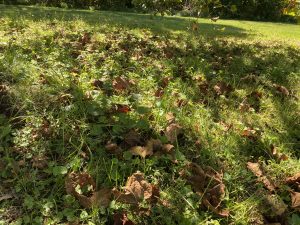
The ground surrounding my tree
Although I was unable to get close enough to the aquatic turtles for observation of their body structure, I know they have certain beak shapes depending on the type of food they eat and they have webbed feet to be able to remain living in the water. The snapping turtle has some interesting adaptations, such as its long and flexible neck, which allows it to stretch their necks very far and snap down on their prey with their strong jaws. The beak on a snapping turtle has sharp cutting edges, which allows it to tear into prey easily, and makes it quite a terrifying animal to be near. Thankfully, this particular snapper seemed to be more afraid of me, as it quickly swam into hiding when I came near. The shell of the snapper allowed it to quickly blend in with the plant matter and murky side of the pond, which made it impossible for me to catch a picture of its full body. I was also able to observe some pond skaters, as they used their adapted body structure to glide across the water’s surface with ease. After some research, I learned that there are hairs on their body that go into the water and create bubbles, which keep water from sticking to their bodies. They are also able to glide due to their small size and proportions. The final organism I examined was a small spider that was sitting on the water by the bank, which seemed to be able to remain on the surface just like the water striders. I did not get to see it move across the water, as I prefer to keep my distance from certain types of spiders (actually, any spider that is not a jumping spider.) These spiders can move across the surface of the water due to hydrophobic velvety hairs on their legs, and they catch prey by feeling for their vibrations on the water. These adaptations were fairly easy to come up with, as I had witnessed them in person or was already aware of the body structure for the animals I didn’t get a close view of. After thinking of some adaptations while still at my sit spot, I decided to leave around 3:40PM, due to the cooler breezes and my lack of warm clothing.
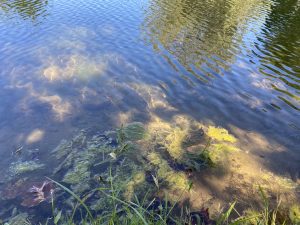
The water by the bank
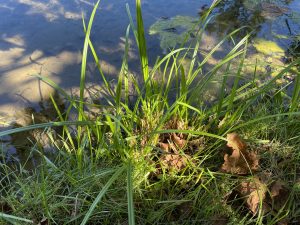
Grass growing in the water and wet ground
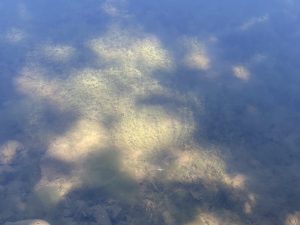
Aquatic Plants
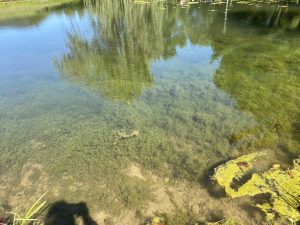
More Aquatic Plants!
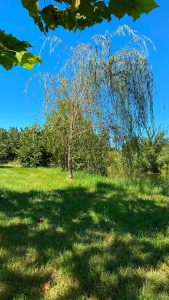
The young willow tree I am now observing
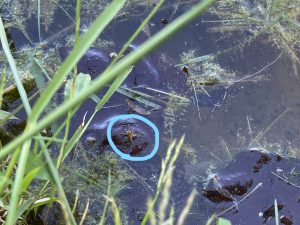
A water spider sitting on some gunk in the pond, showing off his adaptation of being able to move across the surface of the water

The large tree I am observing
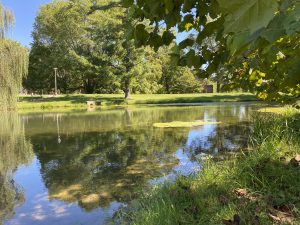
The algae on the pond’s surface I am observing

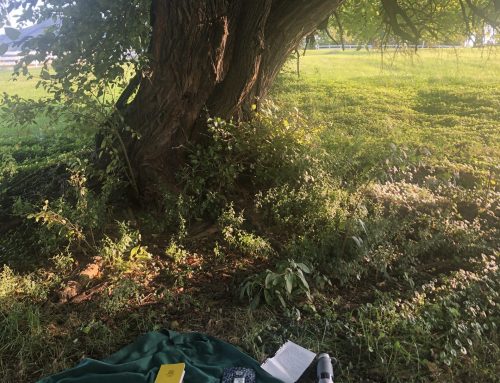
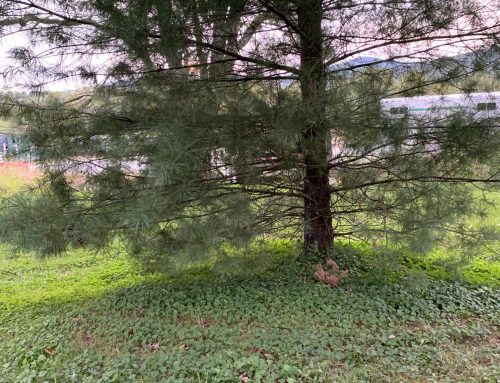
The images kept placing weird and deleting my text, so I apologize for the weird placement of them on this one.
I really loved reading your sit spot, and your photo helped me better understand what you were seeing while at your sit spot. I especially loved the picture of the young turtle in the pond, and the willow tree because I did not know there was a spot like that on campus. I also loved how you got descriptive on the different species of turtles because I did not know some of the facts that you pointed out. I also want to ask you if you know any of the species of fish that you saw in the pond?